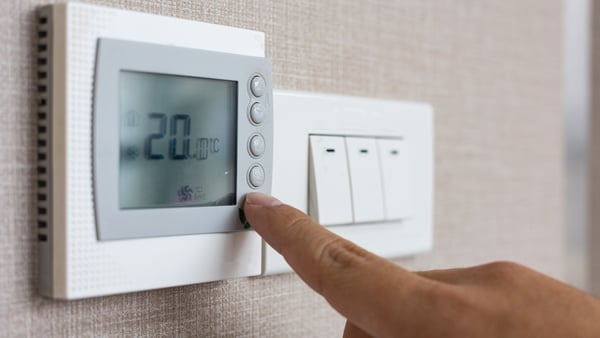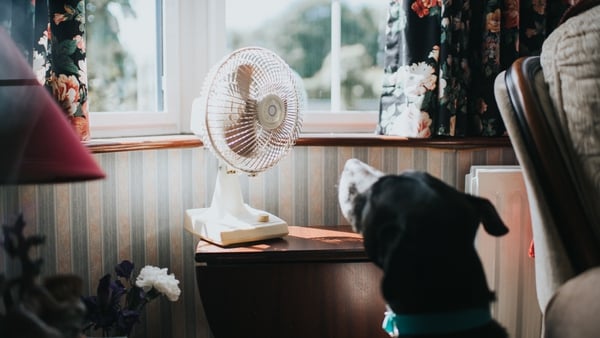Analysis: a new code of practice for indoor air quality is now in operation so what does it mean for employers and employees?
By Asit Mishra, UCC
Indoor air quality (IAQ) refers to the content and characteristics of air inside buildings, like how warm or humid it is. Poor IAQ can cause a variety of short and long-term health problems, including headaches, difficulty concentrating, irritation of mucous membranes, and respiratory infections. As was evident during the COVID-19 period, sufficient ventilation and air filtration was an important factor in reducing the risk of SARS-CoV-2 transmission.
Employers have a responsibility to provide their workers with a safe and healthy work environment, which includes healthy IAQ. The Health and Safety Authority (HSA) of Ireland regulates and promotes work-related safety, health, and welfare. It also develops and enforces regulations and provides information and guidance to promote a culture of safety in the workplace. In May 2023, the HSA introduced the new Code of Practice for Indoor Air Quality. This code provides practical guidance to employers on how to comply with the Safety, Health and Welfare at Work (General Application) Regulations 2007. It is relevant to all workplaces and provides information on meeting the requirements of the Regulations.
Some key regulatory aspects regarding steps that employers should take include the following:
- Conduct a risk assessment of IAQ in their workplace.
- Identify and control sources of indoor air pollution.
- Provide adequate ventilation.
- Monitor IAQ levels.
- Take steps to improve IAQ, if necessary.

The Code of Practice includes specific guidance on how to meet these regulatory requirements, such as:
- Maintain mechanical ventilation systems in good working order; make sure all parts are functional and vents are clear of obstructions.
- Consider installing carbon dioxide (CO2) monitors as well as temperature and humidity monitors, to help assess IAQ.
- Try to maintain the relative humidity between 40% and 70% and maintain an acceptable temperature for office work, between 18 and 23 °C.
- Optimise the system to maximise outdoor air intake and total air circulation in the office space.
- If filters are part of the ventilation system, make sure they are the most efficient filters the system can accommodate. If filters are not part of the system, consider installing them.
- Implement basic control measures such as airing rooms between use, disabling recirculation of unfiltered air, and using extractor fans in wet rooms.
- Enhanced measures, such as increasing outdoor air intake, filtration or portable HEPA filters, may become necessary when there is an external event such as a wildfire.
Read more: 5 ways for schools and workplaces to improve ventilation
Carbon dioxide can be used as an indicator of ventilation in indoor spaces and CO2 monitors can be used to assist with the initial risk assessment of poorly ventilated workplaces. They can also help to raise people's awareness of ventilation requirements and inform individual behaviour in improving ventilation. A CO2 concentration consistently below 1,000 parts per million (ppm) is likely to indicate that an indoor space is adequately ventilated.
A CO2 concentration consistently higher than 1,400 ppm indicates poor ventilation. If CO2 levels are above 1000 ppm but below 1400 ppm, employers should increase the amount of fresh air supplied, and consider installing an air cleaning unit with High Efficiency Particulate Air (HEPA) filtration. In the medium to longer term, they must also consider installing mechanical ventilation. If CO2 levels are consistently above 1400 ppm, employers should take immediate action to increase ventilation and revise occupancy levels and operational hours. They should also consider installing mechanical ventilation in the short to medium term.
As an interim measure, HEPA systems can be installed to address risks from other airborne contaminants like infectious aerosols and fine particulate matter. If employees complain of symptoms related to IAQ and CO2 levels are below 1000 ppm, employers should still carry out an investigation to determine the cause of the complaints. It is important to note that CO2 is just one indicator of indoor air quality. Other pollutants dispersed in the air can also affect IAQ.
We need your consent to load this rte-player contentWe use rte-player to manage extra content that can set cookies on your device and collect data about your activity. Please review their details and accept them to load the content.Manage Preferences
From RTÉ Radio 1's Drivetime, Professor John Wenger explains why ventilation is important and how CO2 monitors work
Employers should review their arrangements for maintaining good IAQ at least annually in conjunction with the review of the workplace Safety Statement. It is also important to reassess IAQ if there are any significant modifications made to the workplace design, affecting ventilation. Employers are also advised to communicate and consult with employees about the risk assessment and control measures put in place. They should also establish a complaints procedure to investigate IAQ concerns raised by employees.
This is a summary of the key steps recommended to improve IAQ. There are other factors to consider, such as the specific type of workplace, the activities that take place there, and the potential sources of pollutants. Employers are encouraged, through this Code of Practice, to take a proactive approach towards maintaining good IAQ for their employees. Through good IAQ, they can help to protect the health and wellbeing of their workers and create a safe, healthy, and productive work environment.
The views expressed here are those of the author and do not represent or reflect the views of RTÉ




